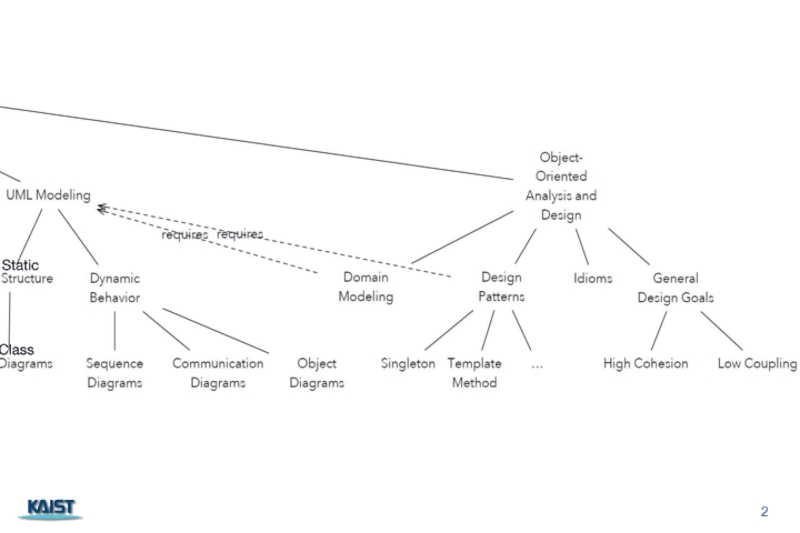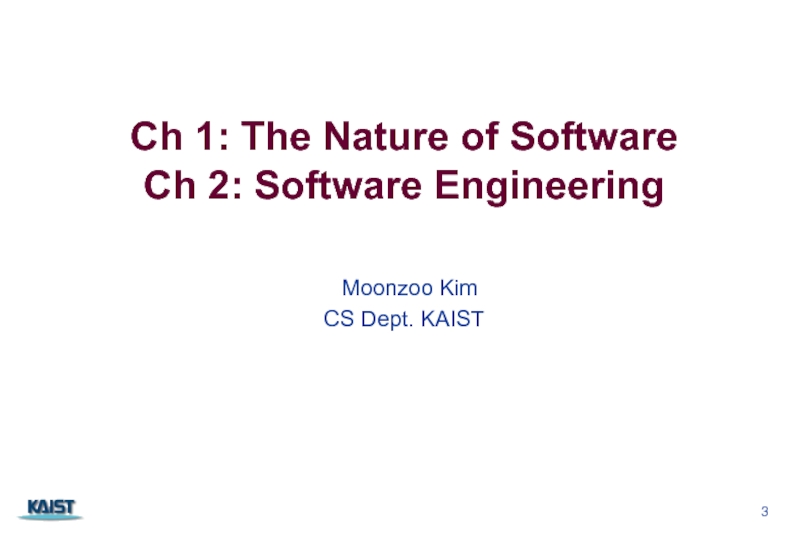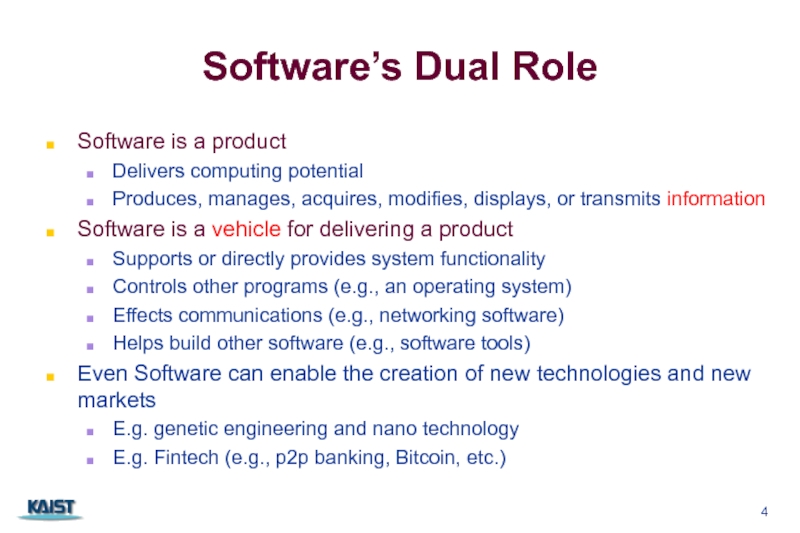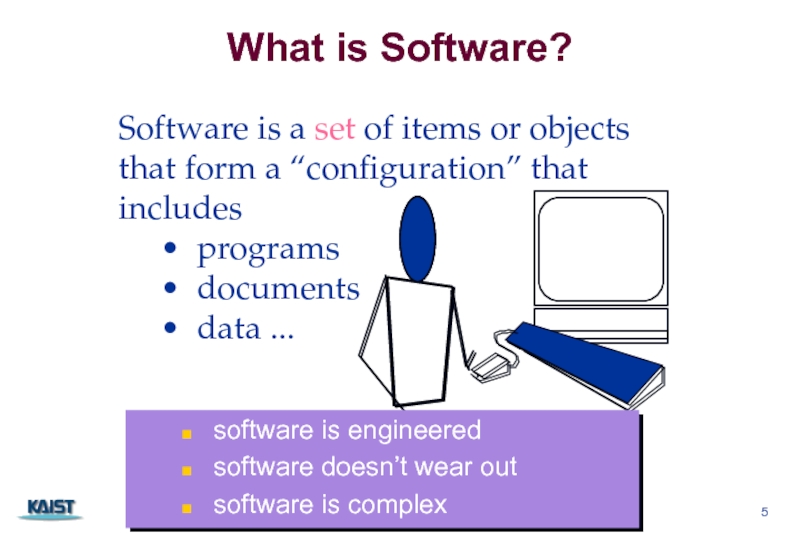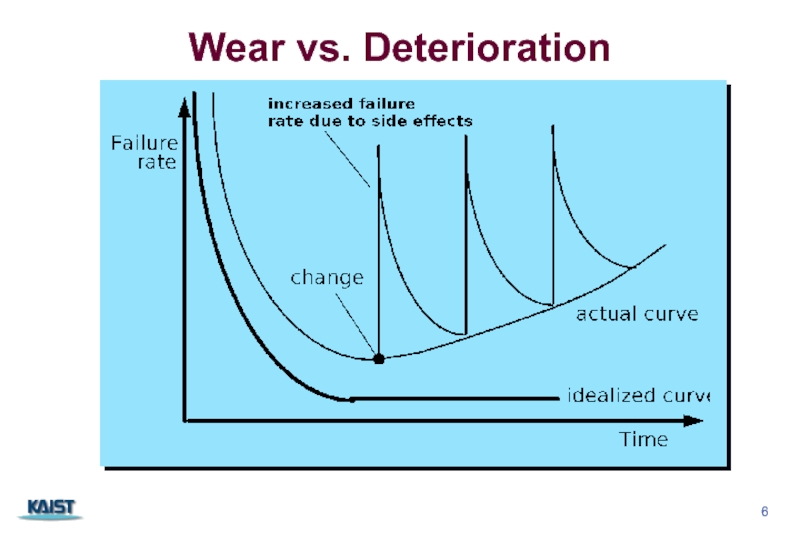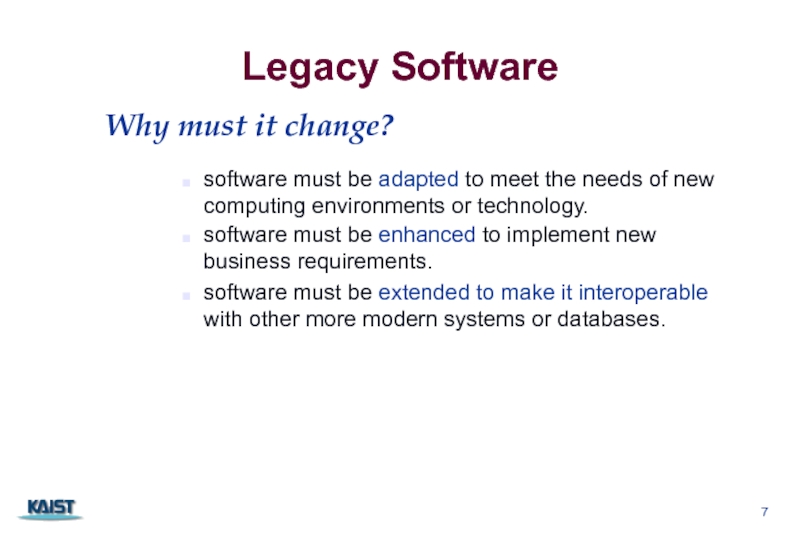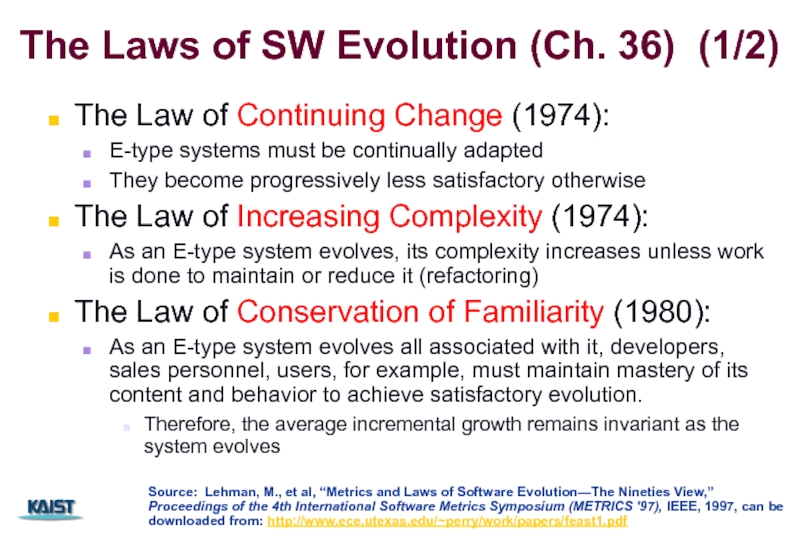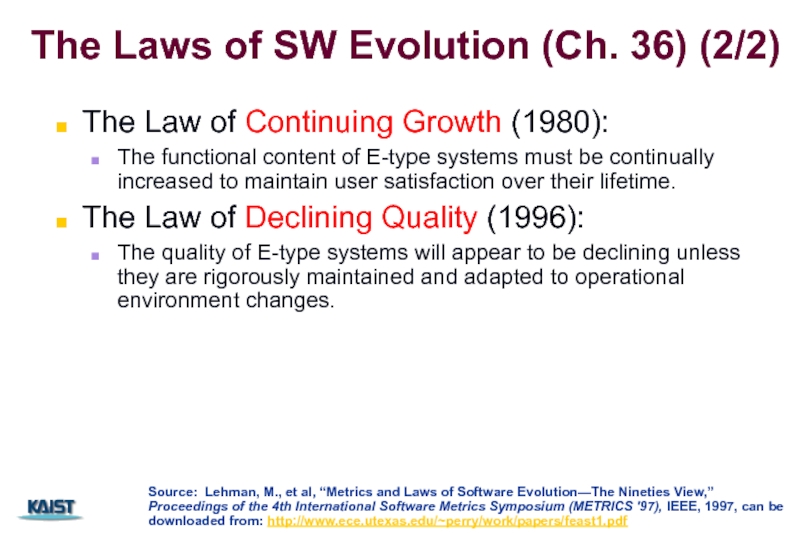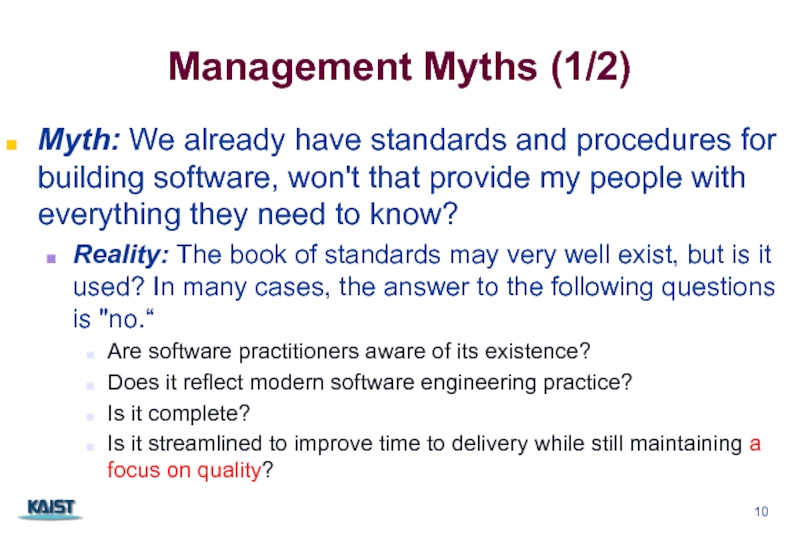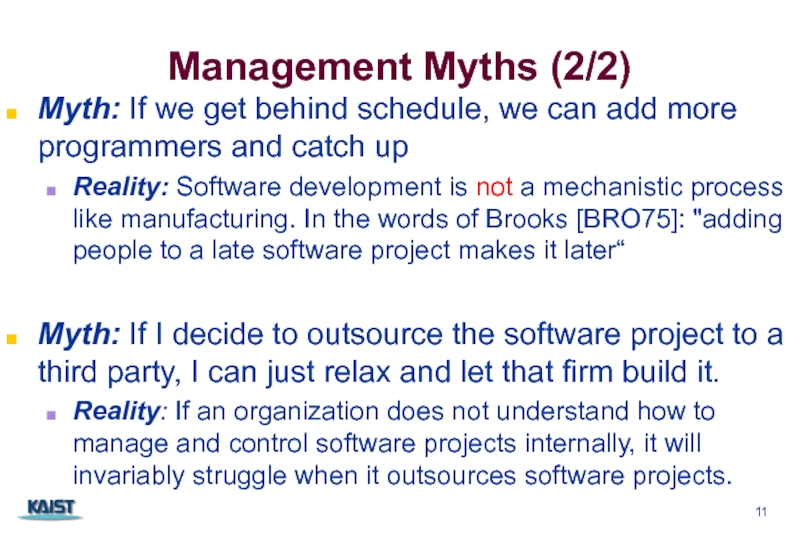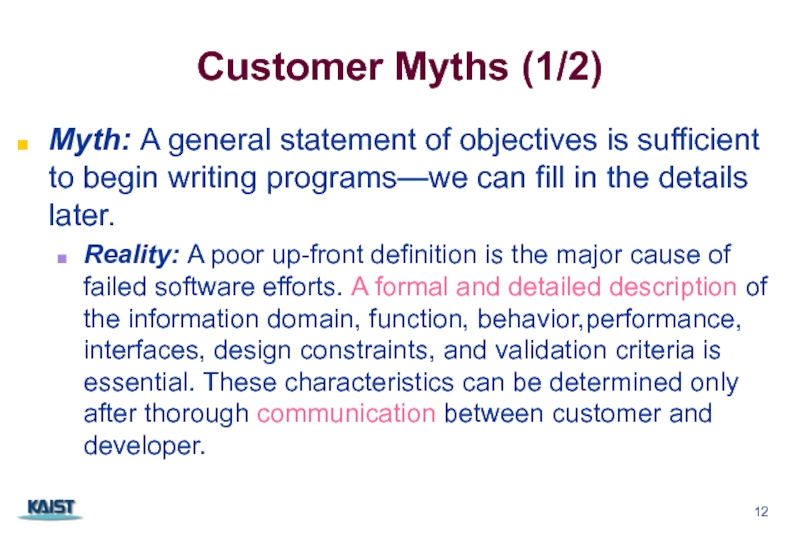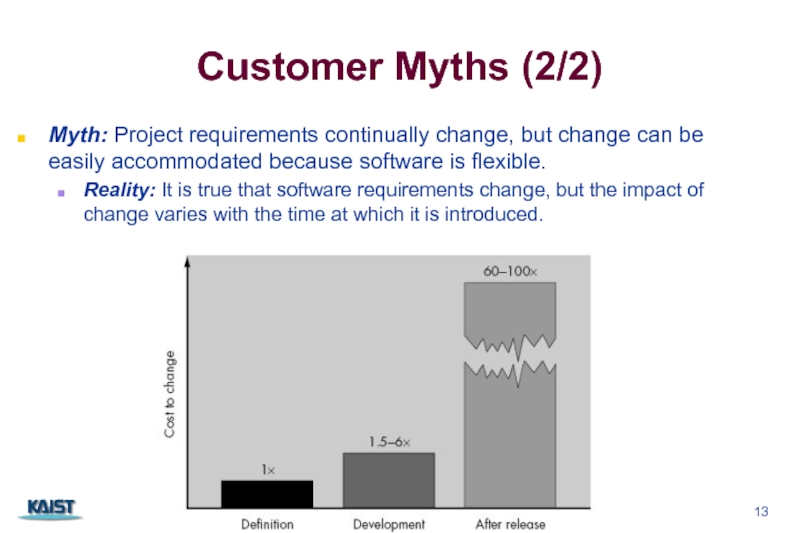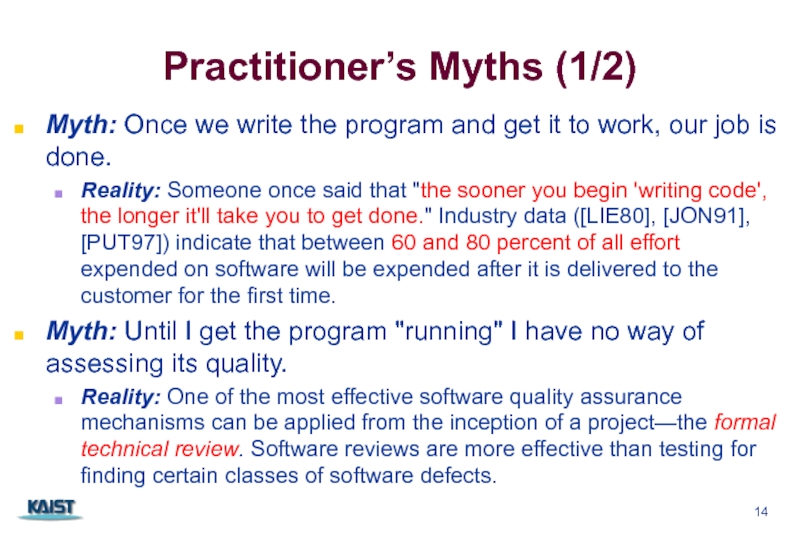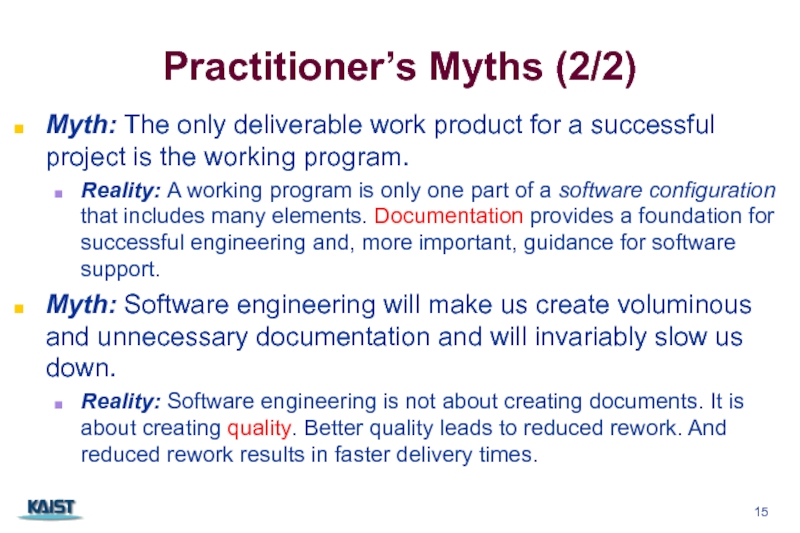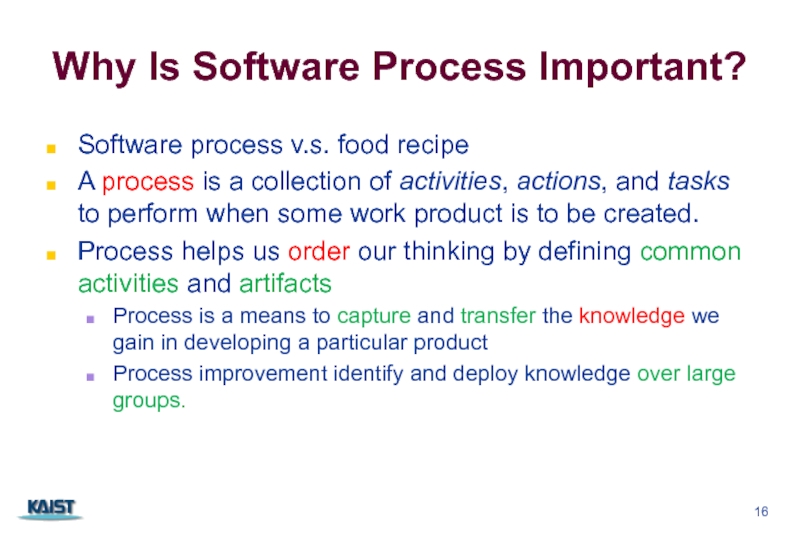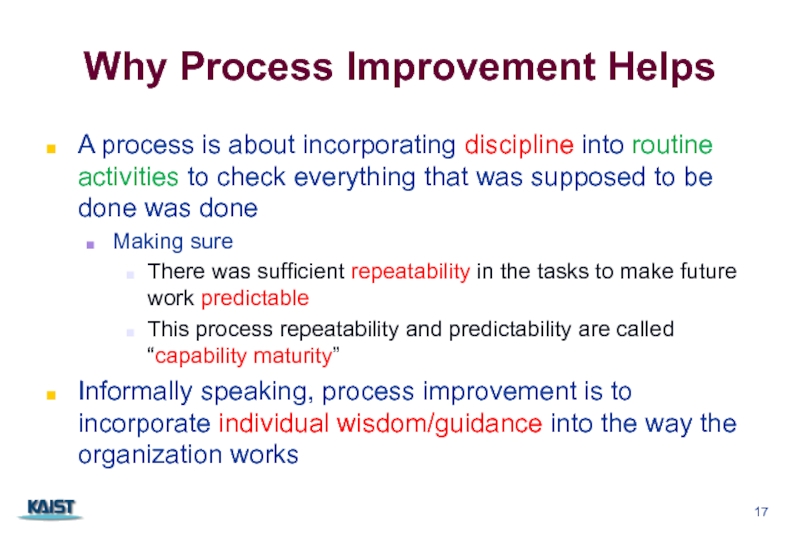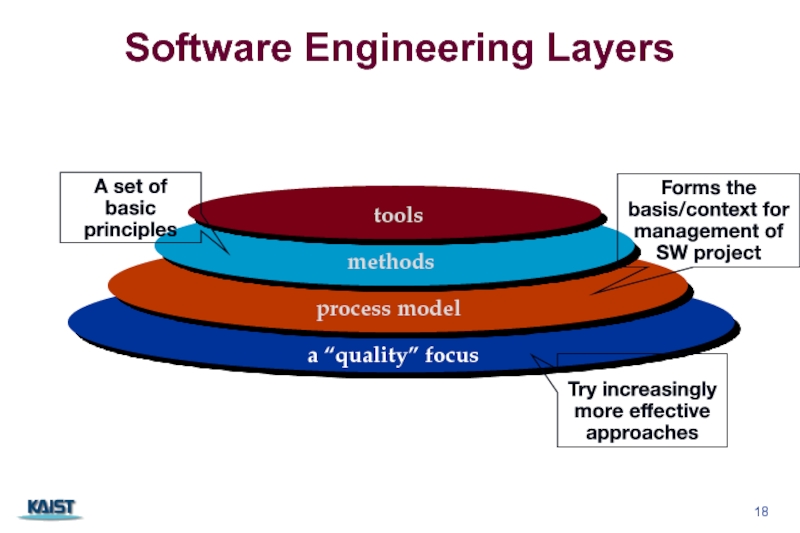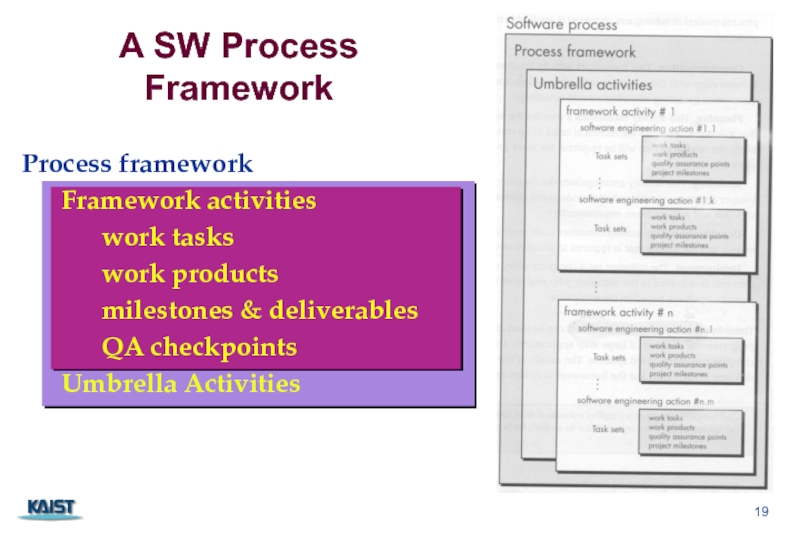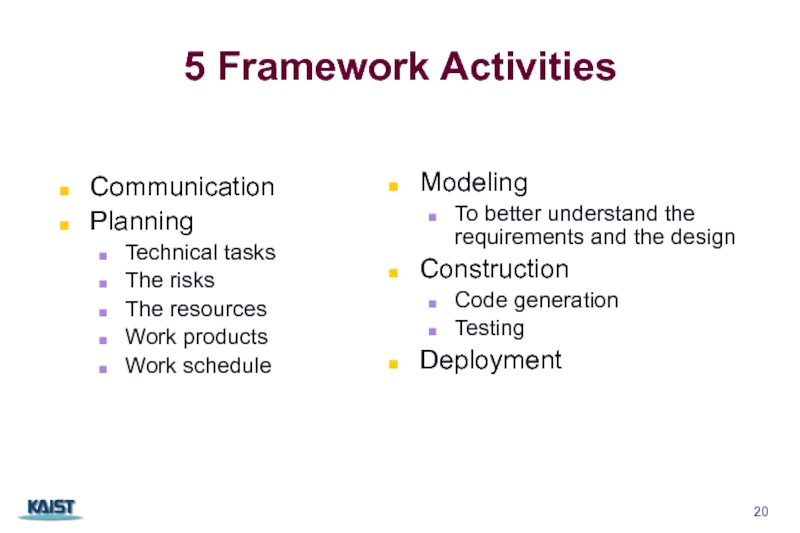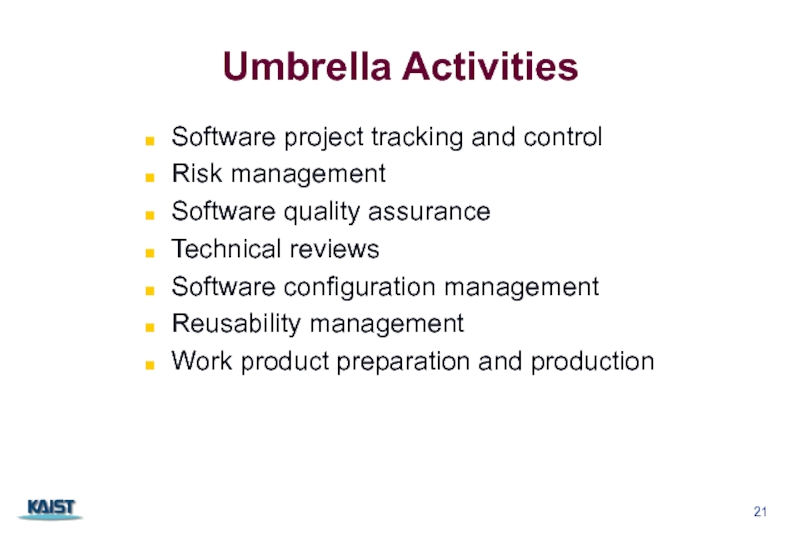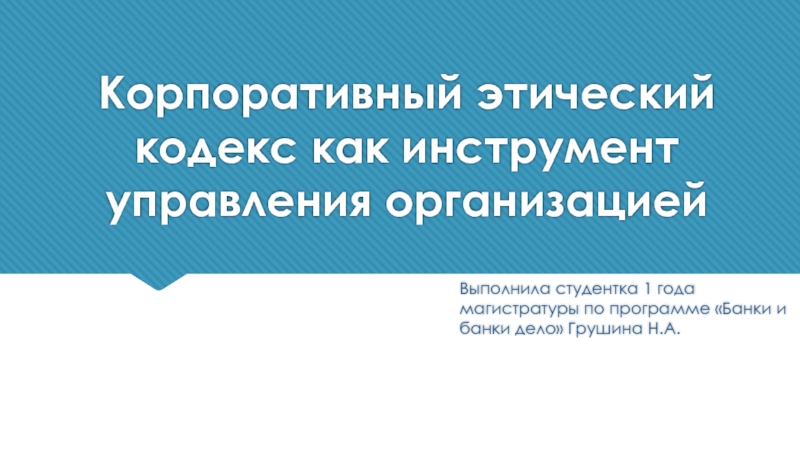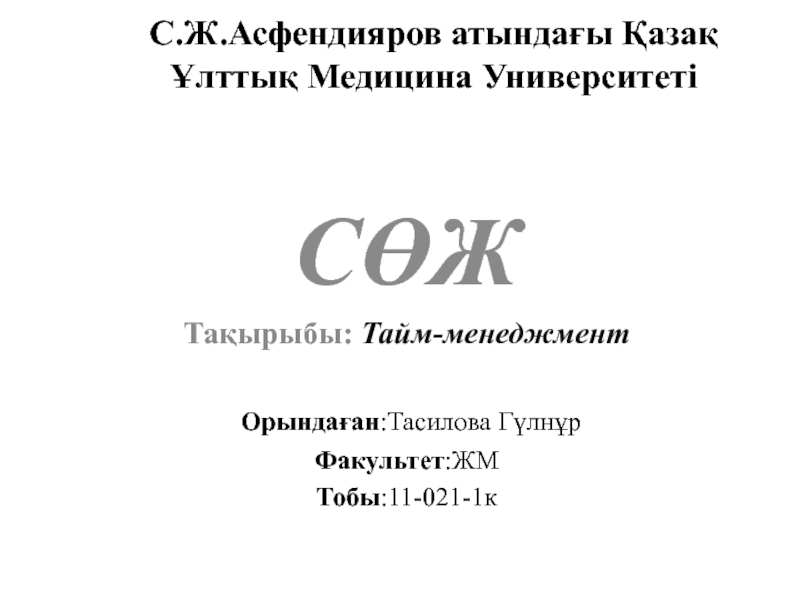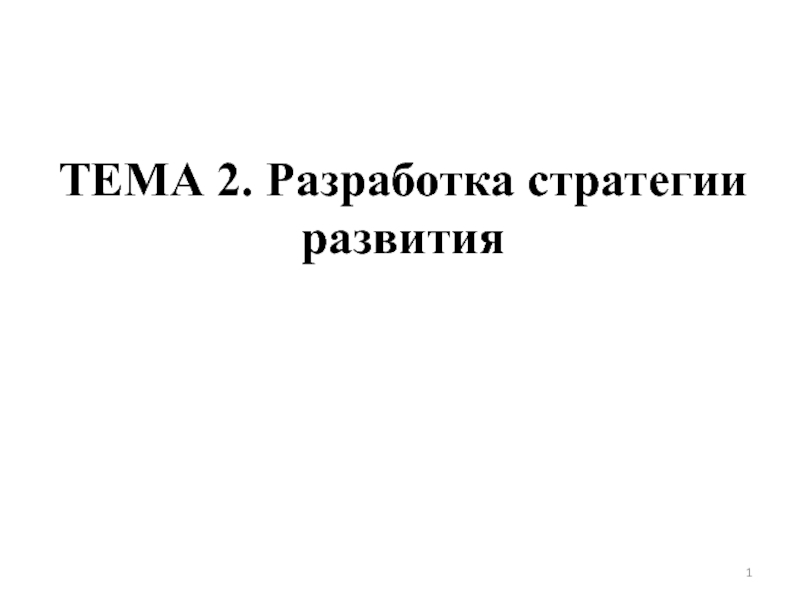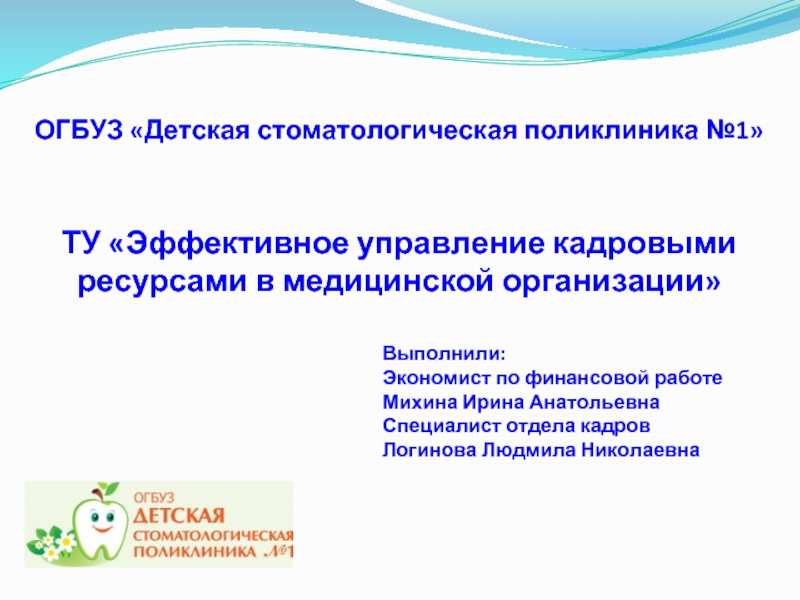- Главная
- Разное
- Дизайн
- Бизнес и предпринимательство
- Аналитика
- Образование
- Развлечения
- Красота и здоровье
- Финансы
- Государство
- Путешествия
- Спорт
- Недвижимость
- Армия
- Графика
- Культурология
- Еда и кулинария
- Лингвистика
- Английский язык
- Астрономия
- Алгебра
- Биология
- География
- Детские презентации
- Информатика
- История
- Литература
- Маркетинг
- Математика
- Медицина
- Менеджмент
- Музыка
- МХК
- Немецкий язык
- ОБЖ
- Обществознание
- Окружающий мир
- Педагогика
- Русский язык
- Технология
- Физика
- Философия
- Химия
- Шаблоны, картинки для презентаций
- Экология
- Экономика
- Юриспруденция
Overview on Software Engineering Topics презентация
Содержание
- 1. Overview on Software Engineering Topics
- 2. Static Class
- 3. Ch 1: The Nature of Software
- 4. Software’s Dual Role Software is a product
- 5. What is Software?
- 6. Wear vs. Deterioration
- 7. Legacy Software software must be adapted to
- 8. The Laws of SW Evolution (Ch. 36)
- 9. The Laws of SW Evolution (Ch. 36)
- 10. Management Myths (1/2) Myth: We already have
- 11. Management Myths (2/2) Myth: If we get
- 12. Customer Myths (1/2) Myth: A general statement
- 13. Customer Myths (2/2) Myth: Project requirements continually
- 14. Practitioner’s Myths (1/2) Myth: Once we write
- 15. Practitioner’s Myths (2/2) Myth: The only deliverable
- 16. Why Is Software Process Important? Software process
- 17. Why Process Improvement Helps A process is
- 18. Software Engineering Layers
- 19. A SW Process Framework Process
- 20. 5 Framework Activities Communication Planning Technical tasks
- 21. Umbrella Activities Software project tracking and control
Слайд 1Overview on Software Engineering Topics
Excerpted from SE class taught by Dr.-Ing.
Слайд 4Software’s Dual Role
Software is a product
Delivers computing potential
Produces, manages, acquires, modifies,
Software is a vehicle for delivering a product
Supports or directly provides system functionality
Controls other programs (e.g., an operating system)
Effects communications (e.g., networking software)
Helps build other software (e.g., software tools)
Even Software can enable the creation of new technologies and new markets
E.g. genetic engineering and nano technology
E.g. Fintech (e.g., p2p banking, Bitcoin, etc.)
Слайд 5What is Software?
a
Software is a set of items or objects
that
includes
• programs
• documents
• data ...
software is engineered
software doesn’t wear out
software is complex
Слайд 7Legacy Software
software must be adapted to meet the needs of new
software must be enhanced to implement new business requirements.
software must be extended to make it interoperable with other more modern systems or databases.
Why must it change?
Слайд 8The Laws of SW Evolution (Ch. 36) (1/2)
The Law of Continuing
E-type systems must be continually adapted
They become progressively less satisfactory otherwise
The Law of Increasing Complexity (1974):
As an E-type system evolves, its complexity increases unless work is done to maintain or reduce it (refactoring)
The Law of Conservation of Familiarity (1980):
As an E-type system evolves all associated with it, developers, sales personnel, users, for example, must maintain mastery of its content and behavior to achieve satisfactory evolution.
Therefore, the average incremental growth remains invariant as the system evolves
Source: Lehman, M., et al, “Metrics and Laws of Software Evolution—The Nineties View,” Proceedings of the 4th International Software Metrics Symposium (METRICS '97), IEEE, 1997, can be downloaded from: http://www.ece.utexas.edu/~perry/work/papers/feast1.pdf
Слайд 9The Laws of SW Evolution (Ch. 36) (2/2)
The Law of Continuing
The functional content of E-type systems must be continually increased to maintain user satisfaction over their lifetime.
The Law of Declining Quality (1996):
The quality of E-type systems will appear to be declining unless they are rigorously maintained and adapted to operational environment changes.
Source: Lehman, M., et al, “Metrics and Laws of Software Evolution—The Nineties View,” Proceedings of the 4th International Software Metrics Symposium (METRICS '97), IEEE, 1997, can be downloaded from: http://www.ece.utexas.edu/~perry/work/papers/feast1.pdf
Слайд 10Management Myths (1/2)
Myth: We already have standards and procedures for building
Reality: The book of standards may very well exist, but is it used? In many cases, the answer to the following questions is "no.“
Are software practitioners aware of its existence?
Does it reflect modern software engineering practice?
Is it complete?
Is it streamlined to improve time to delivery while still maintaining a focus on quality?
Слайд 11Management Myths (2/2)
Myth: If we get behind schedule, we can add
Reality: Software development is not a mechanistic process like manufacturing. In the words of Brooks [BRO75]: "adding people to a late software project makes it later“
Myth: If I decide to outsource the software project to a third party, I can just relax and let that firm build it.
Reality: If an organization does not understand how to manage and control software projects internally, it will invariably struggle when it outsources software projects.
Слайд 12Customer Myths (1/2)
Myth: A general statement of objectives is sufficient to
Reality: A poor up-front definition is the major cause of failed software efforts. A formal and detailed description of the information domain, function, behavior,performance, interfaces, design constraints, and validation criteria is essential. These characteristics can be determined only after thorough communication between customer and developer.
Слайд 13Customer Myths (2/2)
Myth: Project requirements continually change, but change can be
Reality: It is true that software requirements change, but the impact of change varies with the time at which it is introduced.
Слайд 14Practitioner’s Myths (1/2)
Myth: Once we write the program and get it
Reality: Someone once said that "the sooner you begin 'writing code', the longer it'll take you to get done." Industry data ([LIE80], [JON91], [PUT97]) indicate that between 60 and 80 percent of all effort expended on software will be expended after it is delivered to the customer for the first time.
Myth: Until I get the program "running" I have no way of assessing its quality.
Reality: One of the most effective software quality assurance mechanisms can be applied from the inception of a project—the formal technical review. Software reviews are more effective than testing for finding certain classes of software defects.
Слайд 15Practitioner’s Myths (2/2)
Myth: The only deliverable work product for a successful
Reality: A working program is only one part of a software configuration that includes many elements. Documentation provides a foundation for successful engineering and, more important, guidance for software support.
Myth: Software engineering will make us create voluminous and unnecessary documentation and will invariably slow us down.
Reality: Software engineering is not about creating documents. It is about creating quality. Better quality leads to reduced rework. And reduced rework results in faster delivery times.
Слайд 16Why Is Software Process Important?
Software process v.s. food recipe
A process
Process helps us order our thinking by defining common activities and artifacts
Process is a means to capture and transfer the knowledge we gain in developing a particular product
Process improvement identify and deploy knowledge over large groups.
Слайд 17Why Process Improvement Helps
A process is about incorporating discipline into routine
Making sure
There was sufficient repeatability in the tasks to make future work predictable
This process repeatability and predictability are called “capability maturity”
Informally speaking, process improvement is to incorporate individual wisdom/guidance into the way the organization works
Слайд 18Software Engineering Layers
a “quality” focus
process model
methods
tools
Try increasingly more effective approaches
Forms the
A set of basic principles
Слайд 19A SW Process Framework
Process framework
Framework activities
work tasks
work products
milestones & deliverables
QA checkpoints
Umbrella
Слайд 205 Framework Activities
Communication
Planning
Technical tasks
The risks
The resources
Work products
Work schedule
Modeling
To better understand the
Construction
Code generation
Testing
Deployment
Слайд 21Umbrella Activities
Software project tracking and control
Risk management
Software quality assurance
Technical reviews
Software configuration
Reusability management
Work product preparation and production

